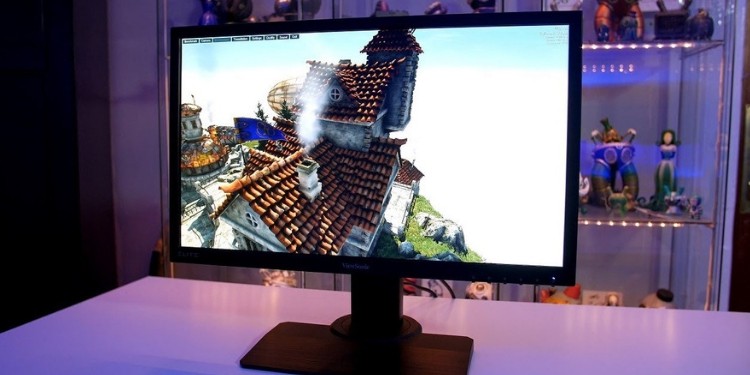Last Updated on
Gaming monitors have a lot of extra features that regular monitors don’t, many of which provide a great edge to gamers. Perhaps the most important spec is the higher refresh rate, usually 144Hz, which enables the user to experience a whole new level of gaming in terms of smoothness, especially for professional-competitive gamers.
Apart from the refresh rate, some gaming monitors offer higher resolutions too– up to 1440p and 2160p (4K)– and lower response times. Let’s have a look at our top five review of best gaming monitors under $300 in 2019.
Keep This in mind when buying your New Gaming Monitor
Monitors are complex and it takes a lot of knowledge to understand the various specifications. Gaming monitors, in particular, are focused on a specific set of specifications which we will be discussing here, so let’s have a look at the basic specifications of a gaming screen. This way you can more easily separate gaming monitor deals and scams in the future.
Size and Resolution
Monitors are available in a lot of sizes but for competitive gaming, the perfect screen size is between 24 inches and 27 inches. Casual gaming can be done on bigger-sized monitors too.
The resolution governs the sharpness of the picture. A higher resolution means there are more pixels present which makes for better picture quality. The budget gaming monitors usually have a 1080p resolution (1920×1080) while high-end monitors offer up to 2160p (3840×2160, aka 4K).
PPI (Pixels Per Inch)
If you take the size of the monitor and the resolution, you can find the PPI. The name really says it all with this specification. PPI reflects the density of pixels and is a is a better indicator of monitor clarity than something like resolution.
IPS, TN, and VA: Panel Technology
The panel is the basis of a screen, so it is pretty important, but there aren’t a lot of types; in fact, there are really only 3 main types:
- IPS panels are considered one of the best as it offers great picture quality with excellent viewing angles.
- TN panels are budget-oriented panels which offer poor viewing angles but provides better response times. They are often paired with higher refresh rates at lower price points. IPS and VA can reach those heights, just for more $$.
- VA panels are balanced and offer good viewing angles along with good response times but, in terms of overall quality, IPS wins.
Refresh Rate
The refresh rate on a monitor, measured in Hertz, functionally represents the highest frame rate you’ll be able to push (although you can overclock your monitor).
60Hz means you’re limited to 60 FPS while 144Hz means you can push up to 144 FPS. A faster frame rate will make things look smoother, which is great for competitive gaming.
Regular monitors usually have a refresh rate of 60Hz, but gaming monitors also frequently feature a 144Hz refresh rate (and even 165Hz or even up to 240Hz).
Color Space Support
Color space support describes the ability of the panel to display colors. These are listed as a percent and an acronym. The percent is straightforward: the higher, the better. The acronyms are different standards, like sRGB and DCI-P3.
On the consumer market, where there is not much focus on the color space, 100% sRGB color space is high-end. However, professional monitors provide much better color spaces and support up to 100% DCI-P3 or at least 100% Adobe-RGB color space.
VRR Technology
When your FPS is too much faster or slower than your effective refresh rate, you’ll get tearing, which is when half the screen displays one frame and the other half displays a different frame.
This can be prevented with the help of VRR (Variable Refresh Rate) technologies. To take advantage of these technologies, however, you will need a monitor that has it and a compatible GPU.
The current technologies for tearing prevention are GSync and FreeSync. Freesync costs much less and is seen most often on budget-oriented screens. Freesync is supported by AMD GPUs… and Nvidia GPUs have also received support as well. G-Sync, on the other hand, costs more, but offers lower input-lag. That being said, it only works with Nvidia GPUs.
Response Time
The response time of a monitor is linked with the ability of the monitor to display the pixels. The higher the response time of a monitor, the longer the delay on the screen. The response time adds up to the overall input lag. Anything below 5ms is good for gaming, which is great since almost all gaming oriented monitors meet this standard.
That being said, this can be complicated some by the fact that some companies use different standards to measure this…

